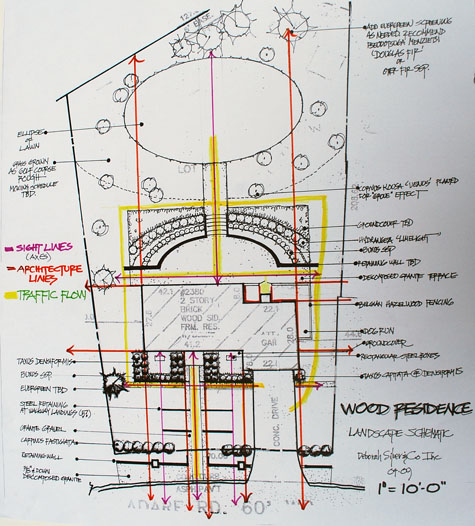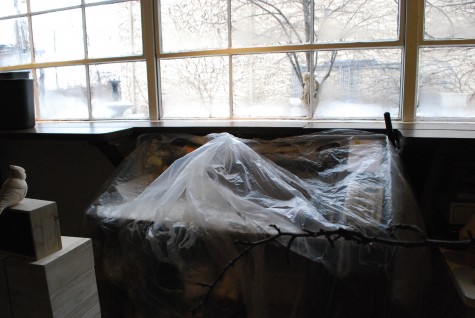 Stuck inside, that is. The inside story-we are repainting parts of Detroit Garden Works for the spring. Every square inch is torn up, everything is stacked up, on hold, or in storage. Then what we have has to be introduced to what is on the way for spring. The visit to the Atlanta Mart gave rise to plenty of ideas about display spaces. I walked through my shop rooms this past week, and tried to imagine what new spaces might look like. Not one idea surfaces. A bad cold didn’t help things. The January weather adds to the inertia that best describes winter; there is a sopping wet and partially frozen dingy grey wool blanket everywhere I look. Every square foot of our 10,000 square feet will be home to our the spring gardening congress. I know I need to be ready, but there needs to be a plan first. All the possibilities and sheer the size of this place means I have less time that I think to get it thought out. It is just hard to shake off that longing for another time and another place-like my garden in the spring or summer or fall- and get going. This makes for a design headache.
Stuck inside, that is. The inside story-we are repainting parts of Detroit Garden Works for the spring. Every square inch is torn up, everything is stacked up, on hold, or in storage. Then what we have has to be introduced to what is on the way for spring. The visit to the Atlanta Mart gave rise to plenty of ideas about display spaces. I walked through my shop rooms this past week, and tried to imagine what new spaces might look like. Not one idea surfaces. A bad cold didn’t help things. The January weather adds to the inertia that best describes winter; there is a sopping wet and partially frozen dingy grey wool blanket everywhere I look. Every square foot of our 10,000 square feet will be home to our the spring gardening congress. I know I need to be ready, but there needs to be a plan first. All the possibilities and sheer the size of this place means I have less time that I think to get it thought out. It is just hard to shake off that longing for another time and another place-like my garden in the spring or summer or fall- and get going. This makes for a design headache.
We have 2 containers coming from the Europe, the first of which is scheduled to make Montreal February 4. What happens next is anyone’s guess. Should that part of Canada see a snow storm the likes of which invaded New York City a few days ago, the railway will be shut down, or keep traffic moving at a crawl. A 2 day trip from Montreal might take 10 days. We have a customs broker who attends to the process of our container being cleared for entrance into the US. That process is a good deal more stringent and time consuming today than 10 years ago. I have no earthly idea what day that semi will pull in with that container on board. It could be days-it could be more time than I bargained for.
If you are a gardener, you get design headaches too, particular to the winter months. The process of deciding what trees, shrubs, perennials, groundcovers, annuals, tropicals, vegetables, herbs you are crazy for-easy. What we all have a mind to grow next season-easy. Every tomato under the sun looks good right about now. What we plan to change, renovate, turn around and rethink-easy. Putting all of this together in a coherent scheme-a design headache. Beautiful meadows-there are many that are nature driven and naturally maintained. They tend to be really big spaces-much bigger than my yard. When nature has an idea, she expresses it on a really big scale. A mini meadow requires such thoughtful design-there’s simply no room for mucking about with obviously unresolved areas. Full scheme ahead.
On my small property, in my small business, I do not have unlimited space and time. I need to pick and choose which statements I wish to make, and then decide how to make them. This means my gardening broadcasts need a lot of distillation, and fast. The Mart in Atlanta-so many things in one place. Making sense of it all-big work that is still going on. One finite space, one small voice-looking to organize and energize a collection. Seed catalogues, tools, nursery stock availability lists, annuals, pots and benches for spring-there is plenty to to see, read and absorb. There is also the matter of the stack of site plans on my drafting table-projects which need design time before spring.
Customers straggle to my door-we are happy to let the garden-starved in, but we do not provide that much comfort. The shop is just about 55 degrees. The most lively thing going on is the dogs barking. The January doldrums have set in. The shop is in so many fragments, waiting for an organizing metaphor. In spite of my headache, I like these days when every room is taken down to its bare bones, and the thought of putting it all back together scares me. It means I have work to do that I like.
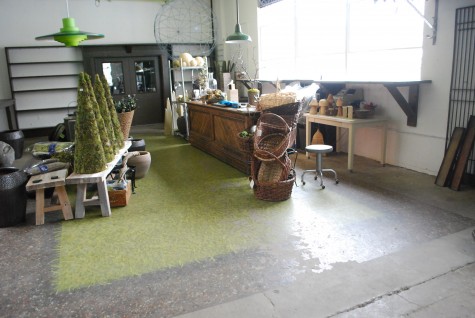 Sorry to say this, but we northern gardeners have the entire month of February, and perhaps into March to go before there is any hint of spring. Not so good for you-not so great for me either. I so miss my garden. But for the shop, the deconstruction is good. It means our spring will be a fresh.
Sorry to say this, but we northern gardeners have the entire month of February, and perhaps into March to go before there is any hint of spring. Not so good for you-not so great for me either. I so miss my garden. But for the shop, the deconstruction is good. It means our spring will be a fresh.  If there ever was a time for a big idea, this is it. I feel sure that if I look long enough, I’ll spot one.
If there ever was a time for a big idea, this is it. I feel sure that if I look long enough, I’ll spot one.


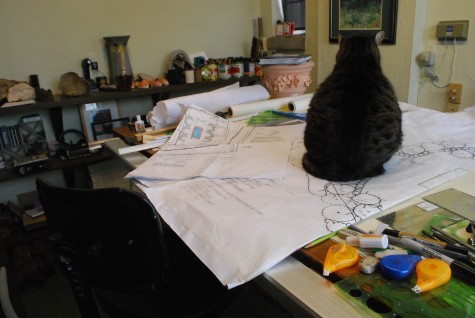
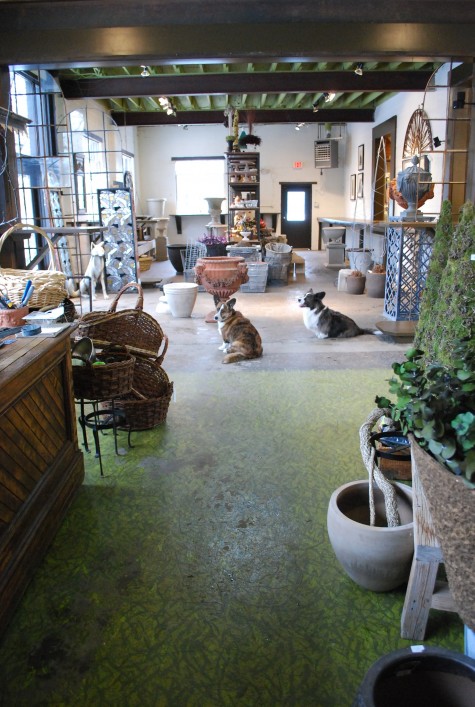
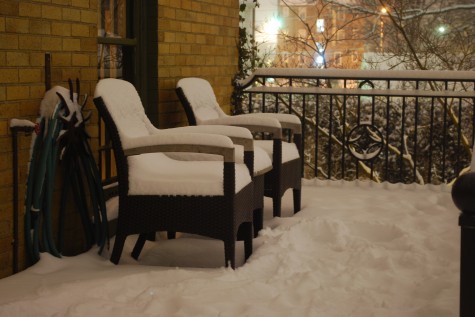
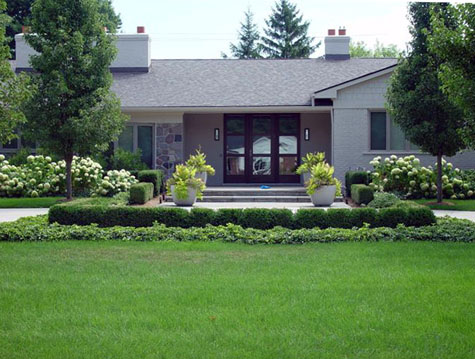
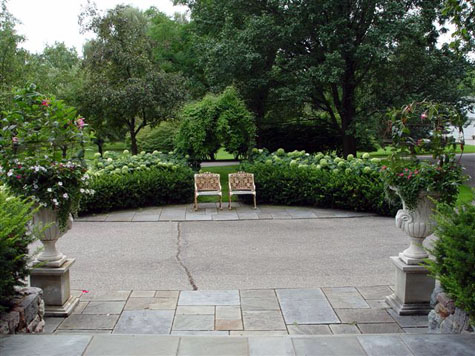 Years ago I was part of a crew planting a landscape for a local church. The designer was very old-school about proper placement of landscape materials. He once remarked to me that if the best looking day of a landscape was the day it went in, the designer deserved a ticket and a heavy fine for not having educated his client about the difference between theatre, and landscape.
Years ago I was part of a crew planting a landscape for a local church. The designer was very old-school about proper placement of landscape materials. He once remarked to me that if the best looking day of a landscape was the day it went in, the designer deserved a ticket and a heavy fine for not having educated his client about the difference between theatre, and landscape.
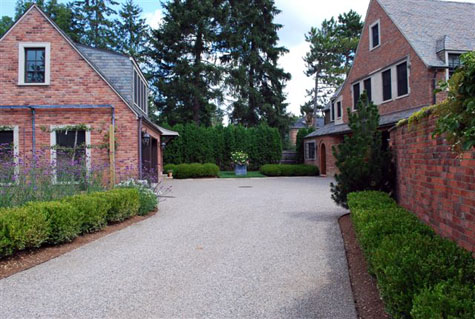 But here I was planting trees very close to the foundation of the church. Once the trees were planted, he went to each tree with shovel, and tilted them ever so slightly away from the building. When I protested that the trees were crooked, he said, “Imagine what this will look like in twenty years. It will seem that the trees were here first, and the church emerged from this grove, pushing the trees ever so slightly outward. The house of God, nature, history-do you get this?” I did.
But here I was planting trees very close to the foundation of the church. Once the trees were planted, he went to each tree with shovel, and tilted them ever so slightly away from the building. When I protested that the trees were crooked, he said, “Imagine what this will look like in twenty years. It will seem that the trees were here first, and the church emerged from this grove, pushing the trees ever so slightly outward. The house of God, nature, history-do you get this?” I did.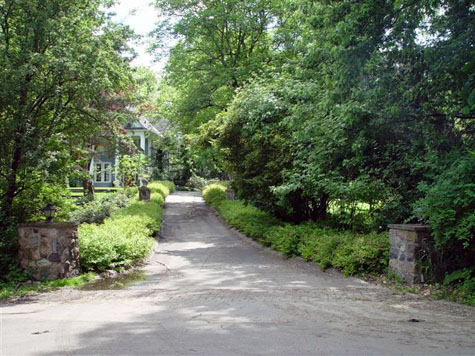 I make it a point to try to imagine how I can make the landscape appear as though it came first, and the house, the walls, terraces, and driveway, came later.
I make it a point to try to imagine how I can make the landscape appear as though it came first, and the house, the walls, terraces, and driveway, came later. Designing the landscape such that you drive through it, makes the landscape appear as if it came first, and therefore the more important element. This sits the drive down on the ground, visually. It makes the transition from the street to your home an experience. Imagine this.
Designing the landscape such that you drive through it, makes the landscape appear as if it came first, and therefore the more important element. This sits the drive down on the ground, visually. It makes the transition from the street to your home an experience. Imagine this. This is stage 3 of the schematic plan. By schematic, I mean a plan that details only the big gestures and spaces. It does not tell you which pots to buy, or which cultivar of daylily to plant. That comes later. The big decisions get made first. Where do I want my grill, and my terrace? Where can my kids play? Could I host a large party in that spot? Where do I need shade? Where can I plant my vegetables?
This is stage 3 of the schematic plan. By schematic, I mean a plan that details only the big gestures and spaces. It does not tell you which pots to buy, or which cultivar of daylily to plant. That comes later. The big decisions get made first. Where do I want my grill, and my terrace? Where can my kids play? Could I host a large party in that spot? Where do I need shade? Where can I plant my vegetables?